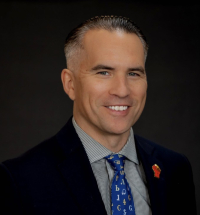One foot in the past, the other moving forward: Anderson pushes the boundaries of her craft
Never tell people how to do things, said the indefatigable General George S. Patton. Instead, he said, tell them what to do, and they will surprise you with their ingenuity.
That viewpoint resonates clearly with Lori Anderson, and it’s why she’s working hard to keep old Appalachian traditions alive, remembering their creativity in an age where such resourcefulness is becoming increasingly harder to come by.
“The thing I rely on most about the past and history is their ingenuity. Here they were in the mountains and they had to figure it out themselves,” said Anderson. “I think that’s something that we’re losing, that if someone doesn’t show you how to do it or do it for you, you’re not going to do it.”
Anderson is a corn shuck artist, and her craft is not one that is practiced or passed down by many in the 21st century. She herself learned the art by self teaching and trial-and-error, before connecting with her mentor, Annie Lee Bryson, known regionally as the corn shuck doll lady.
Then she got plugged into the heritage and tradition that comes with corn shuck art, and when Bryson died last year, she shouldered the burden of keeping the Appalachian art alive.
Though most of what corn shucks are known for in the mountains is dolls, Anderson’s passion in the craft lies elsewhere.
Related Items
“As I was apprenticing with her (Bryson), I could see the passion that she had for making her dolls. That was her joy,” said Anderson. “So, instead of grabbing a hold of her corn shuck joy, I found my own: corn shuck wildflowers.”
Her flowers are stunning replicas of the plants found here in the Smoky Mountains, and thanks to them, she was recently accepted into the prestigious Southern Highland Craft Guild.
In the absence of her friend and teacher, however, Anderson is now doing double duty, with one hand in the past, teaching and demonstrating the traditional corn shuck doll techniques that Bryson perfected and propagated, and the other moving forward, using the husks to make ever more unorthodox creations, stretching and redefining the boundaries of the craft.
But mostly, she’s trying to keep it alive. There are very few books around that teach the intricacies of corn shuck art — Anderson said that every time she comes across one, she snaps it up. And the human resources like Bryson who taught widely in the past are dwindling.
So Anderson goes into schools and fairs and places such as Western Carolina University’s annual Mountain Heritage Day to expose more people to an art that has roots in their communities.
“A lot of times the kids don’t even know what a corn shuck is,” said Anderson. “They think the corn comes frozen in the three-inch little cobs.”
It’s truths like that which keep Anderson pursuing the heritage art of corn husks, keeping up a steady education campaign and demonstrating regularly at the Great Smoky Mountains National Park and elsewhere.
Technology, she said, is proving a bane to the ingenuity that birthed many of the Appalachian crafts that are, today, revered. Figuring out how to make something of what you have, said Anderson, is the crux of Appalachian heritage crafting, and it’s a skill she’s trying to keep alive and cultivate.
This, of course, hasn’t always been her livelihood. Anderson was born and raised in Florida, but spent summer vacations from childhood at Deep Creek in Swain County, instilling in her a deep love of the mountain community.
When an opportunity popped up for she and her husband to relocate to Bryson City in 1998, they leapt at the chance.
Crafting has always been a part of her life — she even bought a load of quilting supplies before the move, expecting to pick up the traditional mountain art — but it’s not until she got here that corn husk creating found her and she found Bryson.
“She had taught for all those years and, you know, some people were mildly interested in them,” said Anderson. But until she came along, there was no torchbearer. For her part, Anderson plans to be a little more vocal about passing on the art than her predecessor.
“I think I’m not going to be so quiet,” she laughs, when asked about where her replacement will come from. “Because I think it’s very important, to learn the old ways of doing things is very important.”
Even if you’re using the old ways to make new things.









